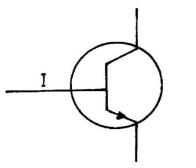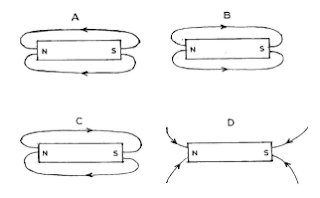BECE 2010 Integrated (Int) Science Paper 1 Objectives
BECE 2010 Science Paper 1
Integrated Science - Objectives
A.
clean B. hard C. soapy D. soft
2.
Which of the following life activities are common to
both plants and animals?
I.
Feeding
II.
Locomotion
III.
Respiration
A.
I
and II only B. I and III only C. II and III only D.
I, II and III
3.
A suitable instrument that could be used to measure
the internal diameter of a bamboo flute is
A.
beam balance B.
metre rule C. Surveyor's tape D.
vernier callipers
4.
The ability of soils to supply the right amounts of
essential nutrients to plants is known as
A.
soil consistency B. soil fertility C. soil
structure D. soil texture
5.
The simplest way of making well water suitable for
laundry purposes is by
A.
adding alum B.
boiling C. chlorination D. filtering
6.
Washing down of soil nutrients beyond the reach of
roots of plants is referred to as
A.
aeration B. infiltration C. leaching D. percolation
7.
Which of the following statements
explain(s) why an object floats in water?
A floating object
I.
is
less dense than water
II.
is
denser than water
III.
has
the same density as water
A.
I
only B. II only C.
III
only D. I and
III only
8.
An example of leafy vegetable crops is
A.
cucumber B. lettuce C. okro D. onion
9.
The structure in the respiratory system of humans
where gaseous exchange occurs is
A.
alveolus B. bronchus C. nostril D. trachea
10.
The gas produced when glucose is oxidized during
internal respiration is
A.
carbon (II) oxide B. carbon (IV) oxide C.
hydrogen D. nitrogen
11.
The farm animal which has crop as part of its
digestive system is the
A.
fowl B. goat C. pig D. sheep
12.
A beneficial effect of wind on the environment is
A.
promotion
of photosynthesis in green plants
B.
pollination
in flowering plants
C.
leaching
in soils
D.
erosion
in soils
13.
The chemical solution that can be used to test for the
presence of protein in food substances is
A.
Benedict’s solution B.
Fehling’s solution C.
Iodine solution D.
Million’s reagent
14.
Which of the following statements about bushfires
is/are true?
I. They cause air pollution
II.
They
deplete vegetation cover
III.
They
contribute to global warming
A.
I
only B. II only C. II and III only D.
I, II and III
15.
The most effective method of controlling soil erosion
on steep slopes is
A.
cover cropping B.
mulching C. strip cropping D. terracing
16.
Which of the following agencies is
responsible for providing information on the weather and climatic conditions of an area?
A.
Animal
Husbandry Department
B.
Extension
Services Department
C.
Information
Services Department
D.
Meteorological
Services Department
17.
The farming system which involves the
growing of one type of crop on the same piece of land every season is known as
A.
mixed
cropping B. mixed
farming C. mono
cropping D. monoculture
18.
The fifth planet from the sun in the solar system is
A.
Jupiter B. Mars C. Neptune D. Venus
19.
The process that takes place when the sperm and the
egg of humans fuse together is referred to as
A.
fertilization B. menstruation C. ovulation D. reproduction
20.
The process by which water vapour
moves through the stomata of leaves into the atmosphere is known as
A. absorption B. diffusion C. osmosis D. Transpiration
21.
An example of an intensive system of poultry keeping is the
A.
deep
litter system
B.
fold
unit system
C.
free
range system
D.
Free-running system
The diagram below represents a
circuit symbol in an electronic device. Study it carefully and use it to
answer questions 22 and 2.
22.
The symbol represents
A.
a light-emitting diode
B.
n-p-n transistor
C.
light
dependent resistor
D.
p-n-p transistor
23.
The part of the diagram labelled I have
A.
more
electrons than holes
B.
no
holes
C.
more
holes than electrons
D. the same number of holes as electrons
24.
A
spot made on a white paper with a given food substance turned the spot on the
paper translucent. The food substance
is likely to contain
A.
glucose B. oil C. protein D. starch
25.
Which of the following sources of energy is non-renewable?
A.
Sun B. Waves C. Wind D. wood
26.
Which of the following farm animals is/are housed in
a hutch?
I.
Goats
II.
Pigs
III.
Rabbits
A. I only B. III only C. I and II only D.
II and III only
27.
Which of the following blood vessels carries
deoxygenated blood?
A.
Aorta B. Pulmonary artery C.
Pulmonary vein D.
Renal artery
28.
The energy transformation that takes place in a car
battery is
A.
electrical
energy → chemical energy → light energy
B.
chemical
energy → light energy → electrical energy
C.
chemical
energy → electrical energy → light energy
D.
electrical
energy → light energy → chemical energy
29.
The type of liquid suitable to construct a thermometer
to read temperatures of about 150°C is
A.
alcohol B. mercury C. turpentine D. water
30.
Amino acids are the end-products of the digestion of
A.
carbohydrates B. fats C. oils D. proteins
31.
The type of teeth used by mammals to cut food
materials is
A.
canine B. incisor C. molar D. premolar
32.
Fishponds are often stocked using
A.
anchovies B. fingerlings C. fish eggs D. frys
33.
Which of the following processes result(s) in the
formation of a new substance?
I.
Burning
of wood
II.
Rusting
of iron nail
III.
Heating
water into vapour
A. I only B. I and II only C. II and III only D.
I, II and III
34.
The use of resistant breeds of farm animals in
controlling diseases is a
A.
biological
control method
B.
chemical
control method
C.
cultural
control method
D.
physical
control method
35.
A load of 10 N is moved through a distance of 2 m.
Calculate the work done.
A. 5 J B.
10
J C. 20 J D. 50 J
36.
Which of the following components of human blood is
dissolved in the plasma?
A.
Mineral salts B.
Phagocytes C. Platelets D. Red blood cells
37.
An atom of carbon is
represented as 12C. How many neutrons are in the nucleus of the carbon atom? A. 2 B.
4 C. 6 D. 12
|
38.
In agribusiness,
middlemen operate within the
A.
production chain B.
processing chain C.
supply chain D.
value chain
39.
Which
of the following illustrations shows the correct direction of the lines of
force around a bar magnet?
40.
The human sex cells are produced in the
A.
scrotum
and uterus
B. testis and ovary
C. penis and vagina
D. scrotum and ova




.webp)








No comments: